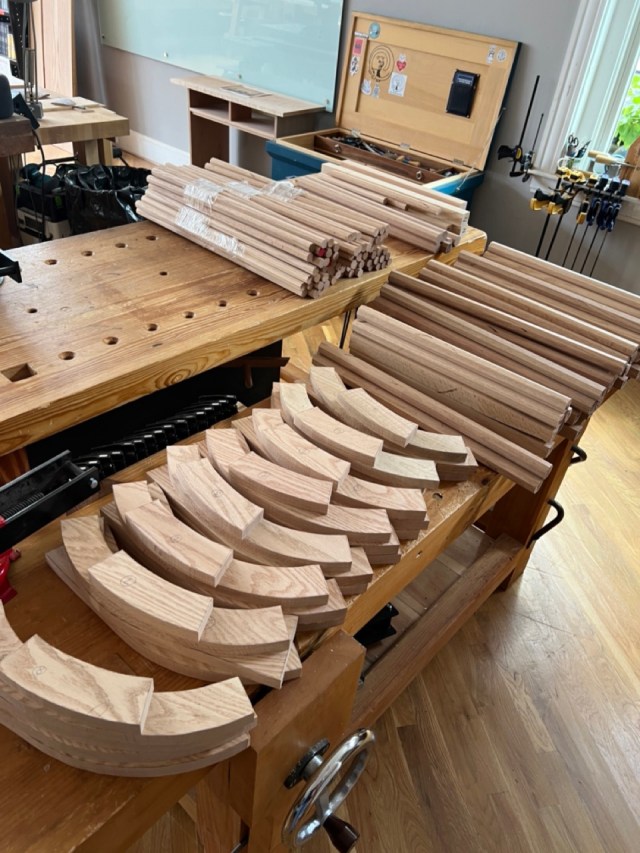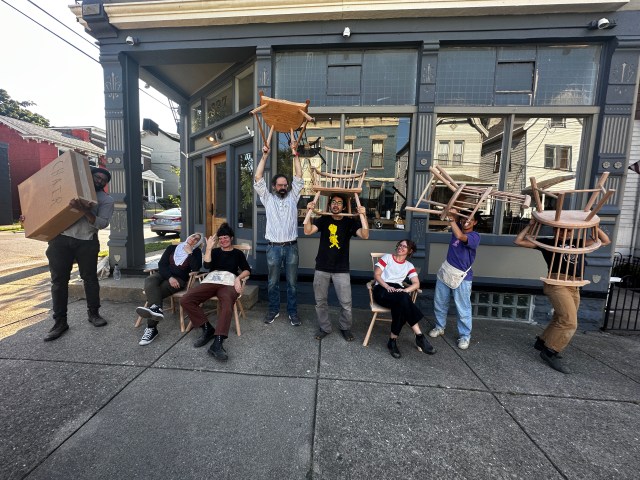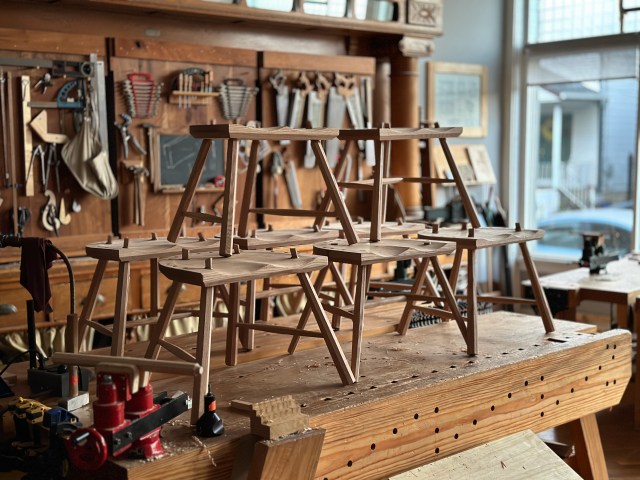
The following is excerpted from “Backwoods Chairmakers,” by Andrew D. Glenn. Part travelogue, part profile and part how-to, “Backwoods Chairmakers” explores the tradition of the enduring Appalachian ladderback form. Glenn takes you inside the shops of more than 20 makers, with photos and personal interviews about their lives and techniques.
Then, Glenn shows you how to make a post-and-rung side chair and rocking chair using the traditional techniques explored in the book.
“I think it was a lack of choice when I was young. This was successful enough, you just keep doing it, but you’re always looking for something better. One day you just realize, ‘I don’t want nothing better.’ That usually comes later in your life.” — Randy Ogle
I had mixed emotions while pulling away from Terry Ratliff’s place for the last time. The day had been filled with laughter and insight, as with each time I traveled out his way. Yet in returning his photo album, I’d removed the necessity for another visit. During this project, the path between our places had grown familiar. I’d gotten better at traversing Terry’s drive, and at this point I knew he’d be able to fix the Element even if I ran into trouble. And I was always interested in the chairs. Terry’s were some of my favorites.
As my travels came to an end, it was natural to weigh the state of affairs. I set out with a simple question in mind: Does the backwoods chairmaker still exist? I found a good deal more makers than I expected.

I was welcomed into the shop by experienced makers, many in the twilight of their chairmaking years. Most had more making behind them than in the future. Each of them, in one way or another, did their part to encourage the next generation.
Will that next generation take hold? That seems to be the question. Yet it’s too soon to say. The chairmakers have done their part. They’ve planted seeds. It’s now the germination and waiting stage of the process. We all must wait to see what comes next. There is potential for a full yield of chairmakers.
I initially felt daunted by the results. Sure there are a few makers still at it, but the field of Appalachian chairmaking is smaller than in the past.
Along this journey I’d come to a false conclusion about how makers came into the field. I bundled folks into two groups: 1) generational or a family line of makers and 2) new makers joining the field. It seemed right. Terry was new, as was Brian Boggs and Lyle Wheeler. Randy Ogle, Mark Newberry and Cecil Patrick passed along a generational line. But this framework is wrong.
This dichotomy and labeling, which I tried to tamp down, led me astray. For each maker chose this life. They weighed it and decided upon it. First generation or fifth, each made a choice.

Then I thought of conversations with Terry and his desire to make something with his hands. His desire to step outside the machinery of the industrial economy. And with more thought, I came to share in Terry’s optimism in the future of Appalachian chairmaking. He said:
You get isolated. People talk about the Covid being in isolation, well I’ve been in isolation before that. Working for myself, working here in the home studio and staying home. It was great to go to shows to be around sort of peers, people who live similar lifestyles or totally different ones, but they’ve chosen an art form that they want to pursue. The most changes in the last year was that all being taken away. Forty years ago to go to a craft show and see a shaving horse was kind of a novel thing. To see a craft show going on and find a shaving horse where somebody was splitting out wood and riving wood and working greenwood and I think there’s a little bit more of that now. It’s still not taking over the whole economy or anything, it’s just a few people, a very few people that are into it. Of those, I don’t know how many are hand tools or old-time technology and how many of them are using lathes and mic-ing things down to the thousandths. But it seems like there are. In a survey, in looking around, and getting what we have now, the media, the electronic media, you can find people, can find folks doing shaving horse work. And before the Covid you could go to shows, there would be folks there doing greenwood joinery, greenwood techniques with shaving horses, drawknives and hand tools. More so than when I first started in ’79-’80, along in there.
It’s not in my stock-in-trade anymore, and even before the pandemic I had cut down the number of shows I participated in. Pretty selective on what I put my energy I put into. So, I’m not out there mixing it up so much in the community. But when I look on Etsy, I see some work that people are doing, putting out there and marketing. Using a lot of hand tools, greenwood, a lot of hand work, spokeshave work.
Societal shifts brought about the rise and fall of Appalachian chairmakers. Local communities needed chairs, and the local chairmaker filled that need. When communities purchased manufactured goods made afar, the chairmakers began to dwindle in number.
Communities no longer need chairmakers. Chairs are available with the push of a button, delivered to your doorstep. Factories make elaborate chairs, using the help of computer design and computer-assisted machinery, with less effort than an individual chairmaker requires.

Chairmaking swims against that tide. The attributes of chairmaking, the inspired creativity, the craftperson’s life, the physical work, being close to the material, residing within a place and a tradition, the opportunity for artistic expression, the ability to start making with low overhead and a few tools, the opportunity to work from home, and the possibilities of working alongside family (to name but a few) are all relevant and enticing. In this way chairmaking is not anachronistic but the pursuit of something different. It is a considered and deliberate way of life. A life lived intentionally.
I’m optimistic that others will choose this path as well, with more beautiful chairs added to the tradition.
Appalachian chairmaking remains, with its hand extended toward anyone interested.











